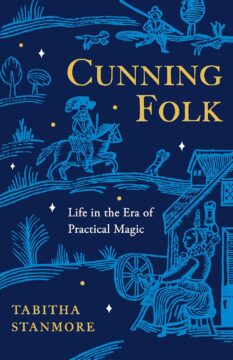Liesl Schillinger at the NYT:
 In her spirited and richly detailed “Cunning Folk,” Tabitha Stanmore, a specialist in medieval and early modern magic, writes that between the 14th and 17th centuries, “a whole host of magical practitioners” pervaded villages, cities and royal courts — diviners, astrologers, charm makers, healers. Their customers were commoners and courtiers, peasants and merchants, housewives and queens.“This book is not about witches,” Stanmore emphasizes. The cunning folk were different, she explains, because they used “service magic,” not the dark arts, “to positively affect the world around them.” What’s more, “most people” marked a “distinction” between magicians of this kind (good, basically) and witches (evil), although the boundary, she admits, could be “fluid.” That’s because their clients’ requests could be “sinister,” to put it mildly. In 1613, for instance, the depraved Countess of Essex (later imprisoned for murdering a foe with a toxic enema) requested a slow-acting poison from a fortuneteller named Mary Woods, so she could bump off the Count. Woods skipped town rather than comply (so she told authorities) but was tried anyway; her fate is unknown.
In her spirited and richly detailed “Cunning Folk,” Tabitha Stanmore, a specialist in medieval and early modern magic, writes that between the 14th and 17th centuries, “a whole host of magical practitioners” pervaded villages, cities and royal courts — diviners, astrologers, charm makers, healers. Their customers were commoners and courtiers, peasants and merchants, housewives and queens.“This book is not about witches,” Stanmore emphasizes. The cunning folk were different, she explains, because they used “service magic,” not the dark arts, “to positively affect the world around them.” What’s more, “most people” marked a “distinction” between magicians of this kind (good, basically) and witches (evil), although the boundary, she admits, could be “fluid.” That’s because their clients’ requests could be “sinister,” to put it mildly. In 1613, for instance, the depraved Countess of Essex (later imprisoned for murdering a foe with a toxic enema) requested a slow-acting poison from a fortuneteller named Mary Woods, so she could bump off the Count. Woods skipped town rather than comply (so she told authorities) but was tried anyway; her fate is unknown.
more here.
